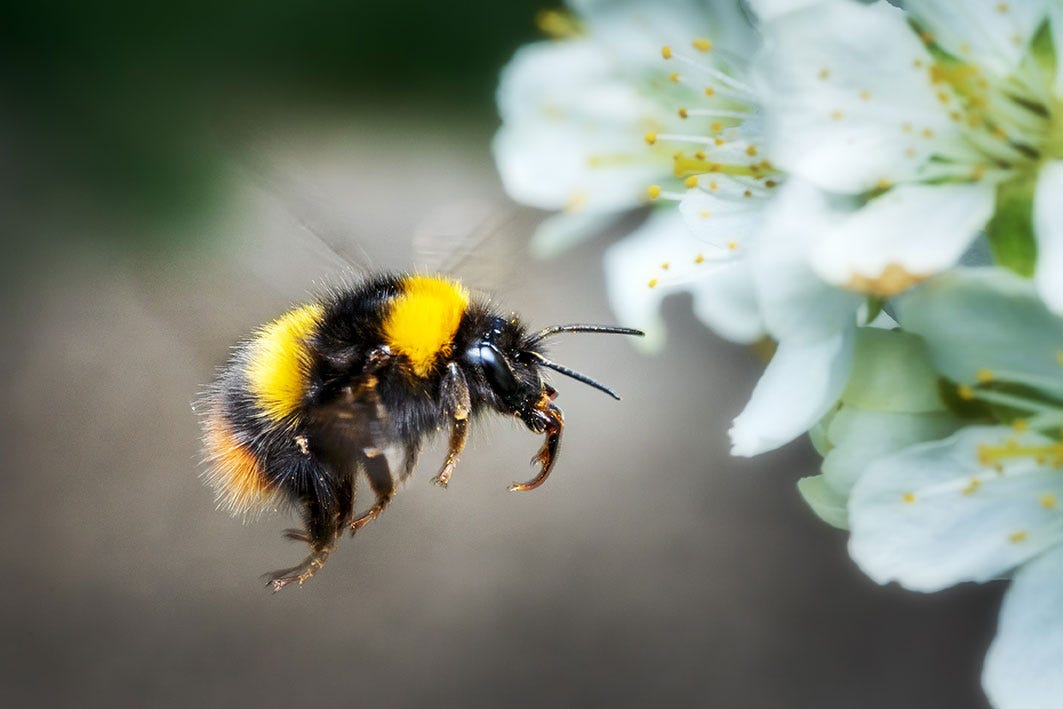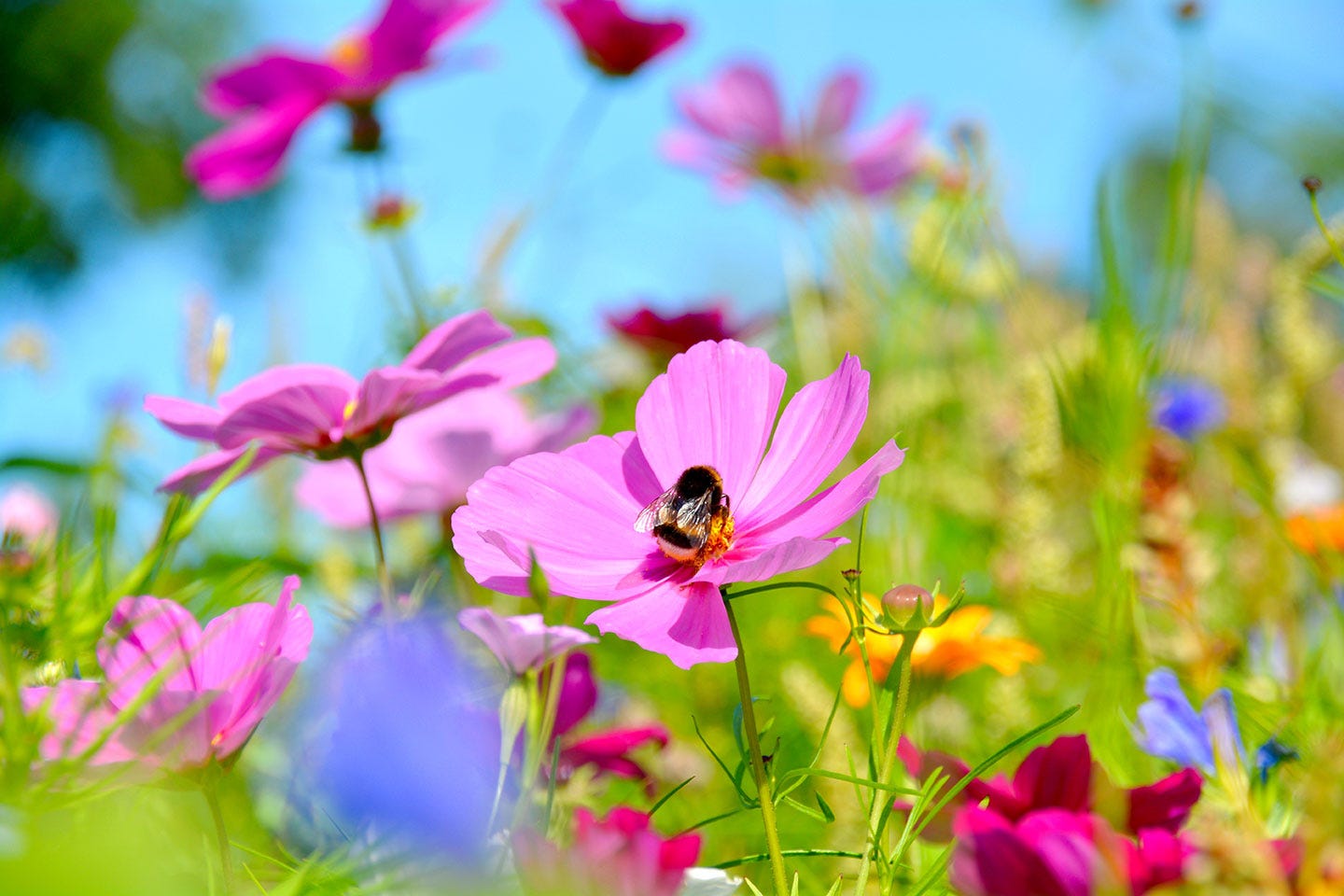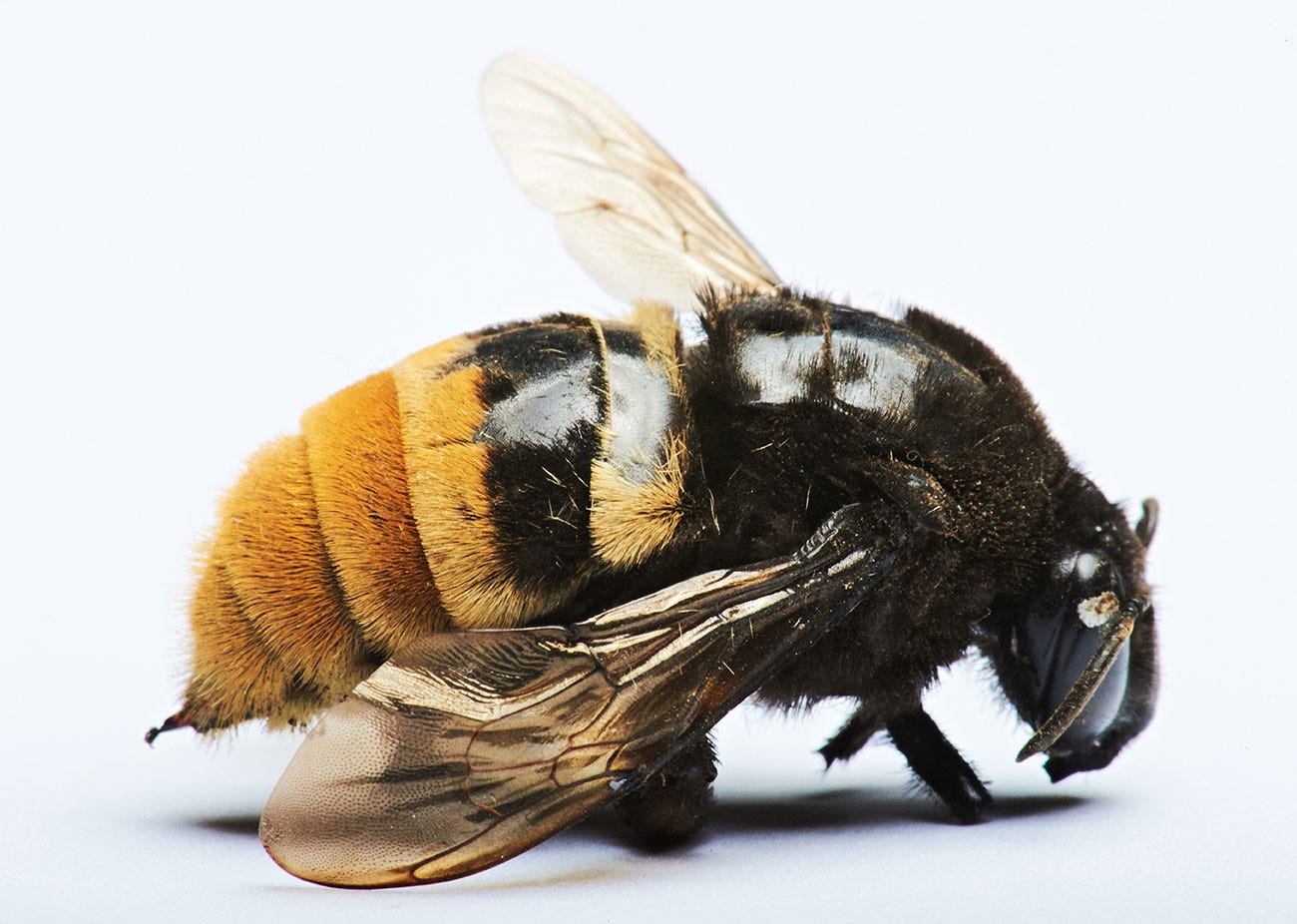Bumblebees are large, furry four-winged insects that belong to an order called the Hymenoptera, which includes sawflies, ants and wasps. Unlike the honey bee, bumblebees don’t make honey, as they don’t need to store food for winter. Instead, the season’s new queens hibernate and emerge to make their own nests in the spring.
Why bumblebees need our help
Sadly, the story of bumblebees over the past century has been one of decline. This is mainly due to the large-scale changes to the way the countryside is managed. First the mechanisation of agriculture, then later the demand for cheap food and the need for ever-greater quantities of crops have conspired to hugely reduce the density of the flowering plants that bumblebees feed on, as well as the sheltered corners that they nest in.
What can be done?
Fortunately, there is much that can be done to benefit bumblebees. Making some simple changes to land management to allow more flowers to bloom can help bumblebee populations to recover in some areas.
It is also possible for individuals to help bumblebees without owning much land. One of the easiest things you can do is plant some bee-friendly plants in your garden, to flower between March and September.
You can also get involved in survey work. Our charity of the year, the Bumblebee Conservation Trust, have set up BeeWalk, a long-term national recording scheme that monitors the abundance of bumblebees on fixed routes across the country. The information collected by BeeWalk volunteers is integral to monitoring how bumblebee populations change through time and allows the charity to detect early warning signs of population declines. All data collected contributes to the long-term monitoring of bumblebee population changes in response to changes in land-use and climate change. Anyone can become a BeeWalker – all you need is a spare hour or so every month to walk a fixed route of about a mile (you choose where it goes). So, why not wait for a sunny day, put on some comfy wide fit shoes and get involved. Click here for more information on becoming a BeeWalker.
How to identify bumblebees
It is easiest to start identifying a bumblebee by its tail colour, followed by the number of bands on its body. Bumblebees fall into three rough groups based on tail colour: white-tailed (includes off-white to yellow), red-tailed, and uniform-tailed bees, where the tail is the same colour as the rest of the abdomen (usually ginger).
The Bumblebee Conservation Trust have put together a Bumblebee ID guide to help you identify bumblebee species when you are on your BeeWalk. Click here to download the guide.
Happy bee spotting!



